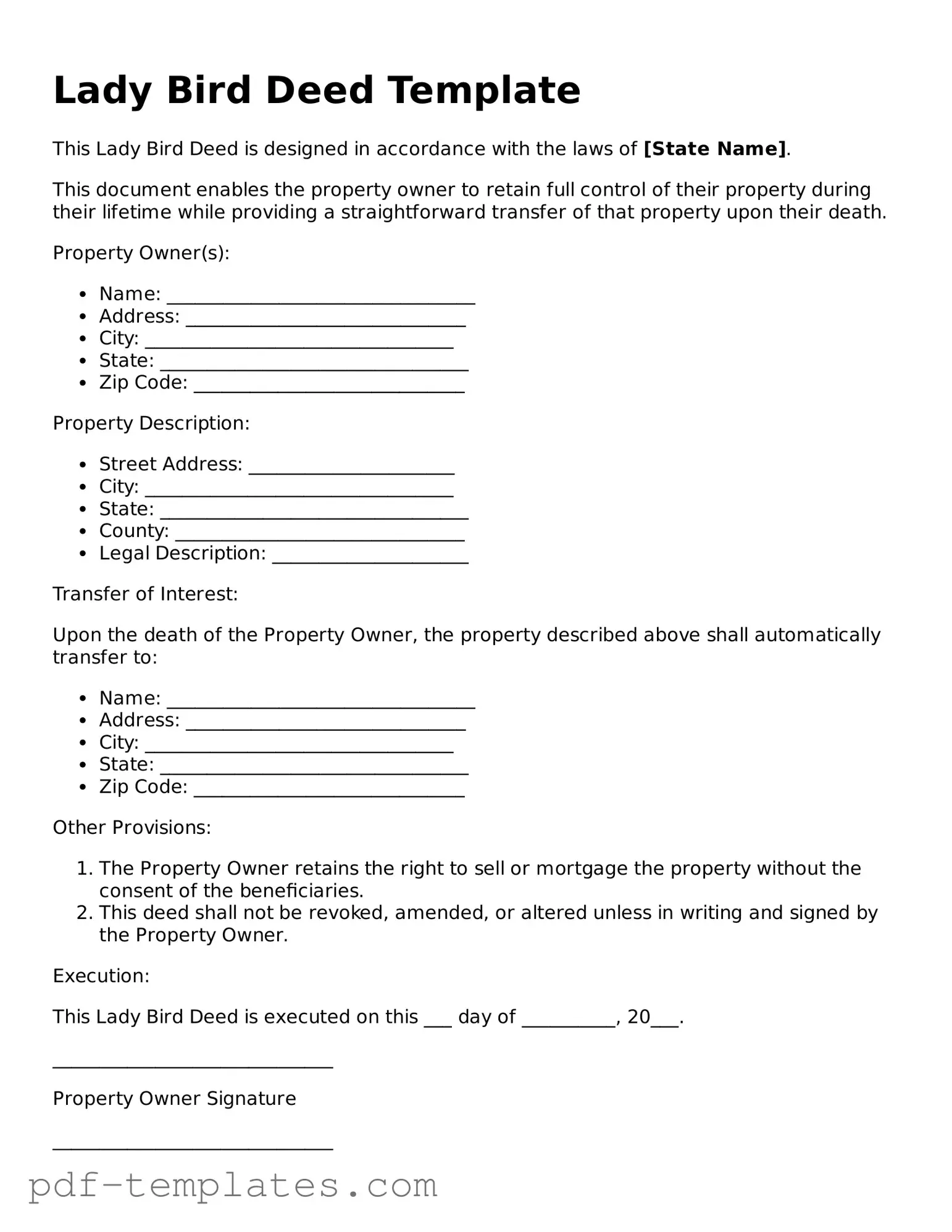The Lady Bird Deed, also known as an enhanced life estate deed, serves as a valuable estate planning tool for property owners in the United States. This legal instrument allows individuals to transfer their property to designated beneficiaries while retaining the right to use and control the property during their lifetime. One of the significant advantages of the Lady Bird Deed is that it bypasses the probate process upon the owner's death, facilitating a smoother transition of property ownership. The form typically includes essential details such as the names of the current owner, the beneficiaries, and a clear description of the property involved. Additionally, the Lady Bird Deed can provide flexibility, as the original owner can revoke or modify the deed at any time before their passing. This feature ensures that individuals can adapt their estate plans as circumstances change. Overall, the Lady Bird Deed is an effective way to manage property transfer while preserving the owner's rights and simplifying the estate settlement process for heirs.
